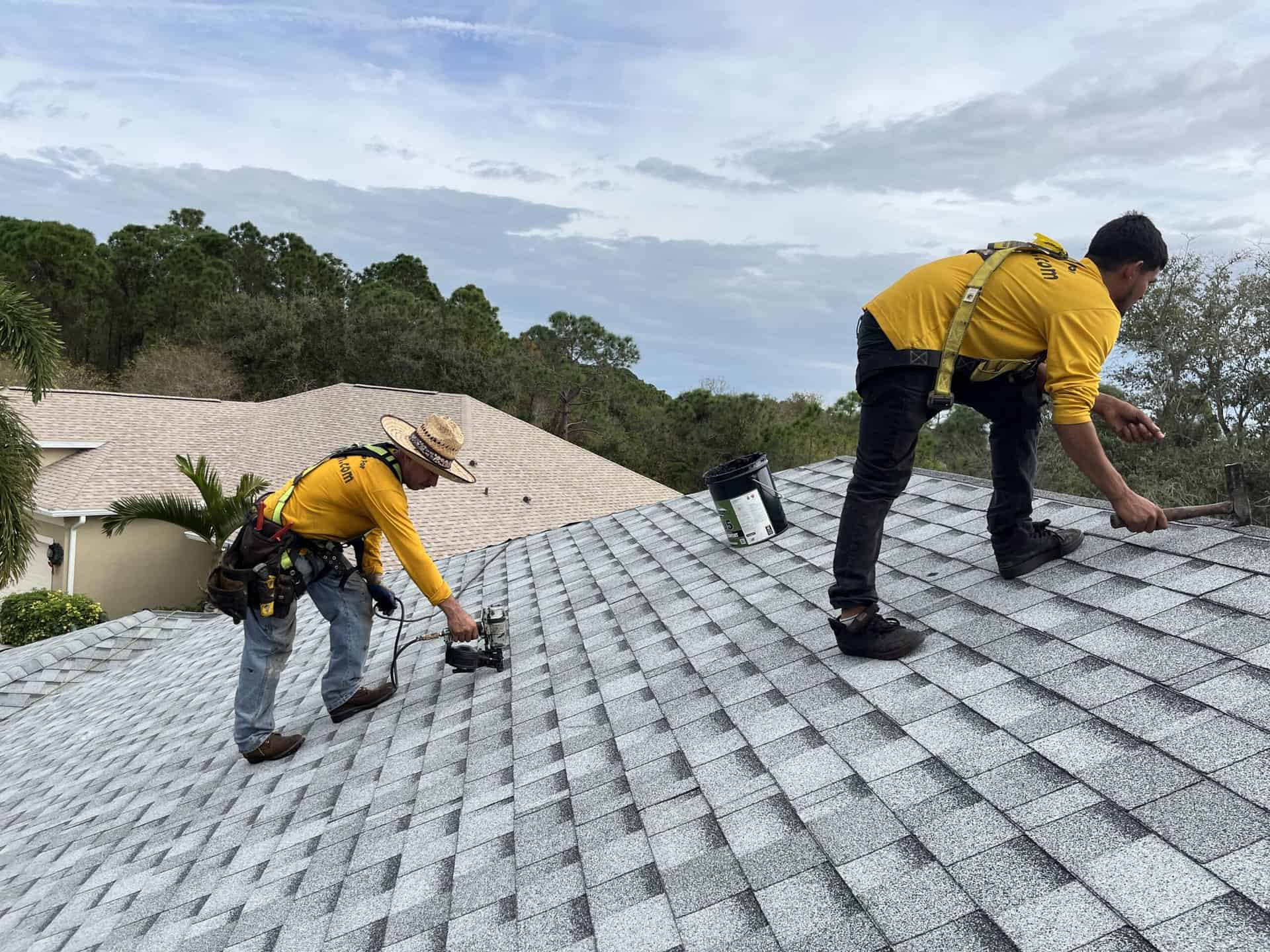New Roof Installation: High-Quality Roofing Solutions for Your Home
New Roof Installation: High-Quality Roofing Solutions for Your Home
Blog Article
Evaluating the most effective Roof Materials for Substitute: A Detailed Evaluation of Resilience, Expense, and Aesthetic Appeal
Selecting the appropriate roof covering material for substitute includes a careful evaluation of numerous crucial aspects, including toughness, cost, and aesthetic appeal. Each option presents distinct advantages and disadvantages; for example, asphalt tiles are affordable yet shorter-lived, while steel roofing systems promise long life at a higher investment. The aesthetic impact of materials like clay tiles can not be overlooked, regardless of their premium cost factor. Comprehending just how these elements communicate can dramatically influence the decision-making process. As we explore these facets better, the effects for your specific circumstance become significantly essential.
Introduction of Roof Products
As house owners progressively focus on longevity and energy efficiency, recognizing the different roof materials readily available for substitute ends up being necessary. The selection of roofing materials straight influences not only the visual allure of a home but additionally its lasting efficiency and upkeep prices.
Among the most usual roof materials are asphalt tiles, metal roof, and tile. Steel roof, which consists of products such as steel and aluminum, provides exceptional sturdiness and power performance, typically reflecting heat and reducing cooling expenses.
Furthermore, newer products such as synthetic tiles and environment-friendly roof are getting traction. Artificial alternatives simulate traditional products while offering boosted sturdiness and reduced maintenance requirements. Eco-friendly roof coverings, which incorporate plants, add to energy effectiveness and biodiversity.
Longevity Assessment
When examining roof covering products for replacement, sturdiness is a critical factor that house owners must consider. The life expectancy and durability of roof materials directly influence long-term maintenance and substitute expenses. Numerous products display differing degrees of durability, making it necessary to understand their performance under environmental stress factors.
Asphalt tiles, while prominent for their cost-effectiveness, usually last 15 to three decades and may need more regular substitute as a result of degeneration from UV direct exposure and severe weather condition. In contrast, steel roof provides remarkable resilience, with a life expectancy of 40 to 70 years and resistance to wind, fire, and bugs. In addition, clay and concrete floor tiles can withstand rough problems, typically outliving 50 years, although their weight requires a robust architectural support group.

Expense Comparison
Taking into consideration the economic ramifications of roof covering materials is crucial for home owners intending a replacement. The expense of roof covering materials can differ dramatically based on aspects such as material kind, installation complexity, and local rates differences.
Asphalt tiles are among the most cost-effective choices, normally ranging from $90 to $100 per square (100 square feet), making them a preferred option for budget-conscious homeowners. On the other hand, steel roofing can cost between $250 and $700 per square, depending upon the type of metal and coating selected. While metal roofing systems tend to have a greater upfront cost, their long life and power effectiveness may cause cost financial savings gradually.
Clay and concrete tiles are likewise on the greater end of the spectrum, balancing between $300 and $600 per square. These materials offer resilience and aesthetic allure however call for a considerable initial financial investment.
Lastly, slate roof covering, known for its exceptional sturdiness and classic appearance, can vary from $600 to $1,500 per square, making it the most costly choice. Homeowners should consider the preliminary expenses versus the expected life expectancy and upkeep demands of each material to make a notified decision.
Visual Factors To Consider
Visual considerations play an pop over to these guys important role in choosing roof covering materials, as the roof dramatically affects a home's general look and aesthetic allure. Property owners typically look for products that match their architectural design and boost the aesthetic charm of their building. The shade, texture, and account of roof materials can considerably influence the general aesthetic.
Materials such as asphalt shingles use a selection of shades and designs, making them a preferred choice for household projects. On the other hand, metal roof covering supplies a smooth, modern-day look and is available in many surfaces that can match modern layouts. Conventional choices like clay tiles or slate can stimulate a classic sophistication, attracting those that favor traditional looks.
Furthermore, the assimilation of roof products with bordering elements, such as home siding and landscaping, is vital. A cohesive color palette and unified appearances can elevate a home's exterior and add to its worth. House owners must also consider exactly how the chosen roof covering product interacts with all-natural light, as this can influence the roof's appearance throughout the day. Ultimately, choosing aesthetically pleasing roof covering materials requires mindful factor to consider of individual taste, architectural design, and the overall vision for the home.
Last Suggestions
Selecting the best roof covering product can dramatically improve a from this source home's toughness and visual charm. roof replacement. Based upon our evaluation of durability, cost, and visual elements, we suggest three primary alternatives for homeowners considering a roofing replacement
To start with, asphalt shingles stay the most preferred option because of their cost and versatility. They offer a good equilibrium of cost-effectiveness and protection, making them excellent for most residential applications. Nonetheless, home owners should consider their long life, as they usually last 15 to 30 years.

Lastly, for those seeking a high end aesthetic, slate or tile roof provides unparalleled you could try here style and sturdiness. Although these materials feature a high cost, their life expectancy can exceed 100 years, making them a worthy investment for high-end homes.
Ultimately, the ideal choice will rely on individual budget, visual choices, and regional climate considerations. Homeowners should seek advice from a roof professional to evaluate their details demands.
Final Thought
In conclusion, picking the ideal roof material requires a mindful analysis of resilience, expense, and aesthetic charm. Asphalt roof shingles offer a cost-effective service with modest durability, while metal roofing excels in resilience and power effectiveness.
Report this page